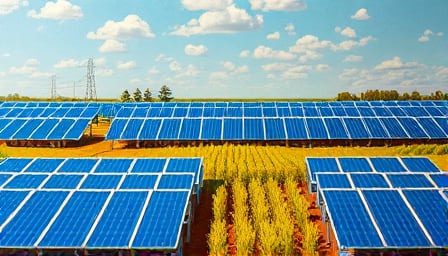Longi Green Energy Technology Co., Ltd. Navigates a Pivot Toward Back‑Contact (BC) Solar Innovation
Longi Green Energy Technology Co., Ltd. (601012.HK), a leading Chinese manufacturer of monocrystalline silicon products, has announced a decisive shift in its product strategy, placing the Back‑Contact (BC) technology at the forefront of its competitive positioning. The company’s recent statements and external developments underscore a broader industry movement toward higher‑efficiency, utility‑scale solar modules and reflect Longi’s ambition to cement its status as a technology leader in the rapidly evolving photovoltaic market.
BC Technology: A Platform for Integrated Innovation
In a detailed briefing on September 9, 2025, Longi reiterated that BC is not merely a single technology but a platform‑compatible architecture capable of integrating with other advanced cell designs such as TOPCon and HJT. By enabling multifunctional stacking and modularity, the BC platform allows Longi to:
- Leverage existing silicon wafer and cell manufacturing capacity.
- Retain flexibility for future iterations, including perovskite‑tandem and other emerging technologies.
- Reduce production complexity and cost for high‑efficiency modules.
The company’s emphasis on BC aligns with a broader industry trend of “百花齐放” (a multitude of competing technologies) where manufacturers are seeking a versatile, scalable solution that can satisfy diverse market segments—from rooftop installations to large‑scale utility projects.
Europe’s Utility‑Scale Adoption of BC
Longi’s partnership with Israel’s Nofar Energy to develop the 282 MW Corbii Mari solar project in Romania exemplifies the real‑world adoption of BC technology at utility scale. The collaboration positions BC as a European standard for large‑scale power plants, delivering:
- Higher energy yield due to improved module efficiency.
- Simplified system integration thanks to the uniform backside contact design.
- Lower maintenance costs, owing to the reduced front‑side wiring and module encapsulation.
This landmark project not only boosts Longi’s presence in the European market but also validates the commercial viability of BC modules outside China’s domestic market, where solar capacity expansion continues to accelerate.
Market Dynamics and Competitive Landscape
While Longi is advancing its BC strategy, the broader photovoltaic sector is witnessing intensified competition and consolidation:
- JinkoSolar and Trina Solar continue to push the envelope in module efficiency and supply chain integration.
- The European market, as reflected in the upcoming China International Photovoltaic & Energy Storage Industry Conference (November 17‑20), is focusing on “光储同辉 融合赋能 智创未来” (integrating light and storage, enabling future innovation).
- Longi’s engagement in the “光伏龙头和解” (dispute resolution) with JinkoSolar regarding patent infringement indicates a broader trend of patent litigation being replaced by collaborative settlements to accelerate technology dissemination.
Financial Position and Market Perception
With a market capitalization of approximately CN¥125.4 billion, Longi’s share price has navigated a range from CN¥12.71 (52‑week low) to CN¥21.17 (52‑week high) during the past year. The company’s earnings per share remain negative (P/E ratio of -22.558), a reflection of substantial investment in research and development, capacity expansion, and strategic partnerships. Nonetheless, the firm’s close price of CN¥17.99 as of September 7, 2025, indicates investor confidence in the long‑term payoff of its BC-focused roadmap.
Strategic Implications for Investors
Investors should consider the following when evaluating Longi Green Energy Technology:
- Technology Leadership: BC’s platform nature offers a competitive moat, allowing Longi to capture multiple market segments with a single manufacturing line.
- Geographic Expansion: Successful deployment of BC modules in Europe, particularly in large‑scale projects like Corbii Mari, signals potential for accelerated revenue diversification outside China.
- Supply Chain Synergies: Longi’s partnerships, such as the joint venture with Yinfade, enhance its supply chain resilience and local manufacturing capabilities.
- Risk Factors: Ongoing patent disputes and the high cost of technology development pose short‑term financial pressures, but settlements and collaborations mitigate long‑term risks.
Conclusion
Longi Green Energy Technology Co., Ltd. is strategically leveraging its BC platform to maintain technological relevance and capture growth in both domestic and international photovoltaic markets. By integrating BC into utility‑scale projects and forming high‑profile partnerships, the company is positioning itself at the nexus of innovation, efficiency, and market expansion. Investors and industry observers alike will be watching closely as Longi continues to translate its technological vision into tangible commercial success.
